The real kicker about designing or remodeling one’s kitchen is how one might most lightly pass over the decision regarding the type of hinge to be used on the kitchen cabinets. With a focus on cabinet style, the colour scheme and even hardware, it is sometimes easy to overlook the choice of the right hinge for the job. The right hinge will not only influence the looks of your kitchen but, more importantly, play a key role in how long-lasting, functional, and convenient your cabinets are. This is because due to the existence of a wide variety of cabinet hinges; therefore, it becomes confusing to choose the best according to your needs.
Post your Requirement
This comprehensive guide walks you through the many different types of hinge designs used in kitchen cabinets. It describes each type of hinge, its characteristics, its advantages, and its best application. Let’s also mention concealed hinges, semi-concealed hinges, butt hinges, piano hinges, and many more.
What Are Kitchen Cabinet Hinges?
A hinge is a mechanical device that has a door connected to the frame of a cabinet, allowing the door to swing open and close. The different kinds of hinges are used in various sizes and designs as required for kitchen cabinets. The right kind of hinge ensures smooth operating and proper alignment and durability of your cabinet doors.
Kitchen Cabinet Hinge Types
There are various kitchen cabinet hinges and each possesses distinct characteristics. Let’s take some time to go through the most popular cabinet hinge types that are used in modern kitchens.
- Concealed Hinges
- Semi Concealed Hinges
- Butt Hinges
- Piano Hinges
- Overlay Hinges
- T-Hinges
- Wrap Hinges
- Magnetic Hinges
- Pivot Hinges
- Surface-Mounted Hinges
1. Concealed Hinges (European Hinges)
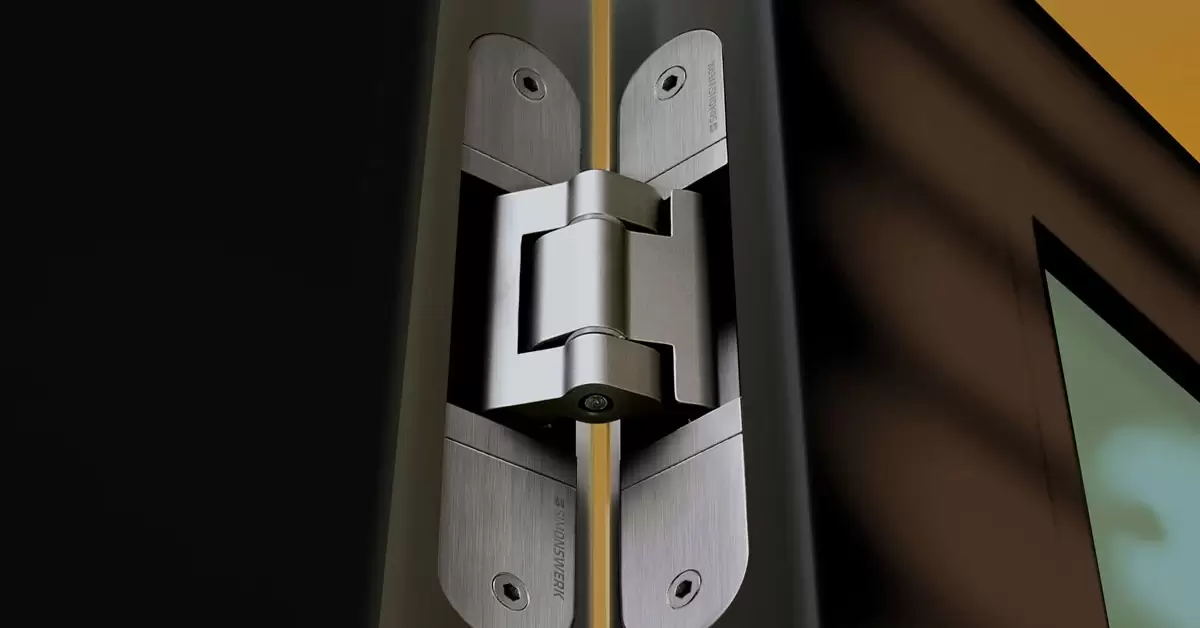
Concealed hinges represent the most popular and versatile types of hinges for general modern cabinetry. These are completely hidden when the cabinet door closes, giving a clean minimalist look that works well with modern kitchens.
Features:
- Hidden when the door is closed. Adds to a seamless look.
- Self-closing hinge mechanism that makes the door shut automatically when forced to some extent.
- The hinges need to be adjusted to have accurate doors even upon installation.
- Oftentimes soft-close technology ensures a gentle, quiet door close.
Application:
- Modern sleek kitchen designs wherein a clean finish and smooth run are desired.
- Over-end cabinets with full overlay.
- People who want a very functional hinge, easy to maintain, and can be adjusted to perfectly align the door.
2. Semi Concealed Hinges
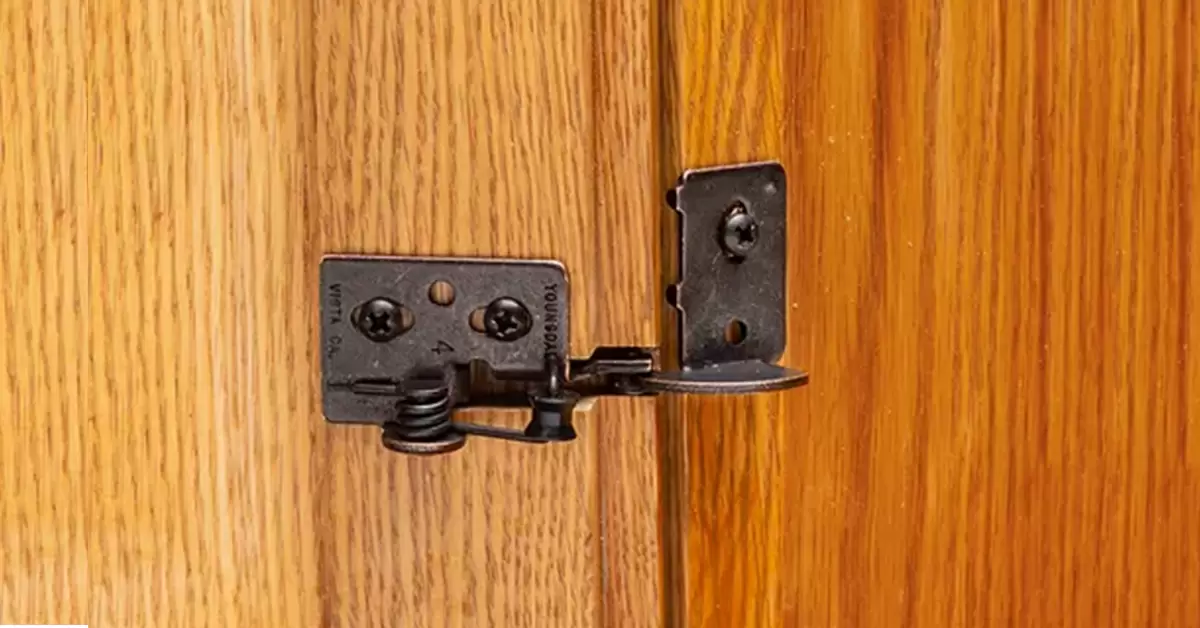
These semi-concealed hinges vary from fully hidden hinges, which do not appear when the cabinet door closes. A part of the hinge is exposed here, giving a look quite similar to traditional practice, but only if you compare it with fully hidden hinges. These are perfect for a balance between visible hardware and a clean, modern aesthetic.
Features:
- Almost visibly shown when the door closes, with the hinge exposed in some way.
- Available in several finishes to suit multiple cabinet styles.
- Not as adjustable as full concealed hinges. Still, typically not as adjustable as semi-clip hinges.
- Used with partial overlay doors because of the about one inch the door overlaps the cabinet frame.
Application:
- Kitchens that incorporate a bit of modern and traditional design elements. Cabinets utilizing partial overlay doors.
- Homeowners that want a hinge with functionality but with an old-world visual.
3. Butt Hinges
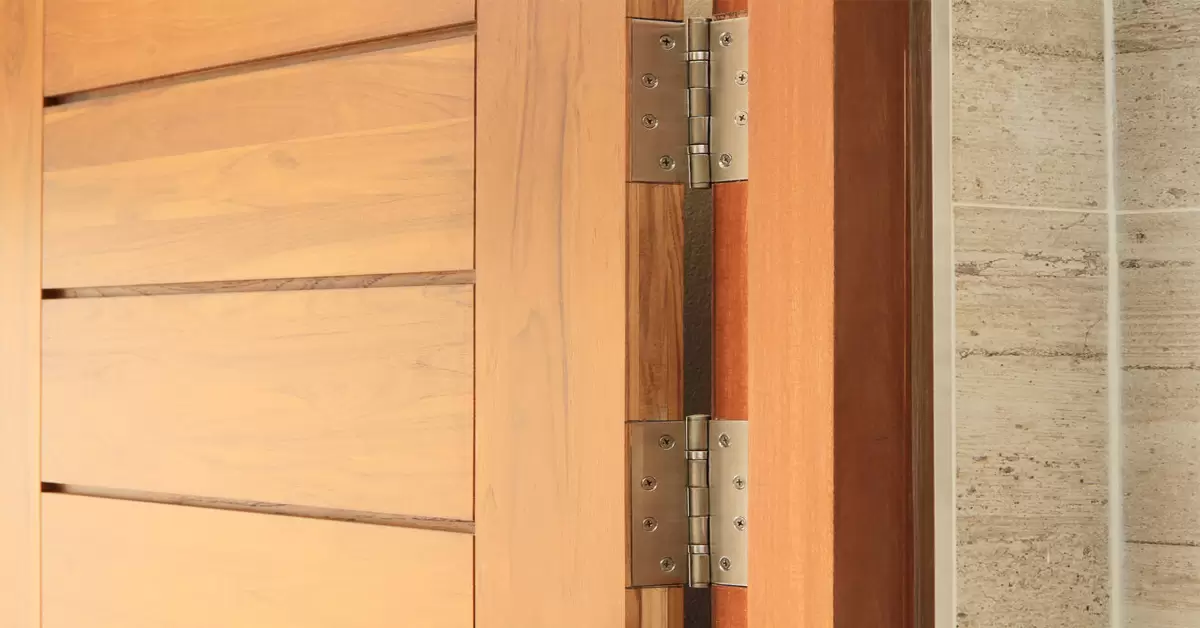
Butt hinges are the most traditional. It is seen in many classic designs or rustic kitchens. They are mounted on the edge of the door and the frame of the cabinet so that when you open the door or you close it, the hinges show.
Features:
- The hinge is exposed which gives a classic, vintage look that a lot of people find aesthetically pleasing.
- Usually made of strong material, such as steel or brass, to support heavy doors.
- Easy to install that makes them perfect for DIY projects.
- They come in various sizes, including the decorative butt hinges with intricate designs, which can support much more ornate cabinets.
Application:
- Traditional, old or rustic kitchen.
- Heavily constructed cabinet doors that require strong and dependable support.
- Homeowners who like visible hinges and an old-fashioned look or style.
4. Piano Hinges (Continuous Hinges)
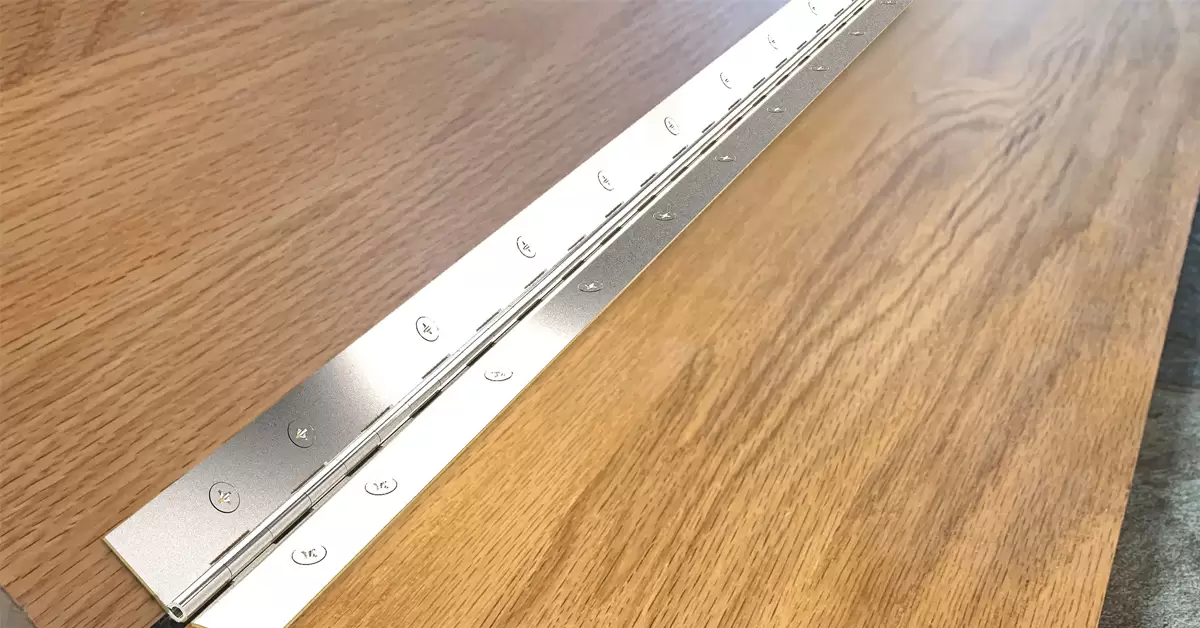
Piano hinges, also known as continuous hinges, are long and run the length of the door for perfectly balanced support. This happens more often for big and heavy doors, including pantry doors, cabinet doors, and very large commercial use.
Features:
- Completely cover the length of the door and provide uniform support.
- Designed for larger, heavier doors where extra strength is needed.
- Made of superior quality material, either stainless steel or brass to perform well with constant use and friction.
- These can be used in the door handles of cabinets as well as on pieces of furniture like chests or storage units.
Application:
- Large-size heavy cabinet doors or doors that are operated a lot.
- In Commercial Kitchens, garages, and workshops where a robust door is required.
- Homeowners who require more strength and security on kitchen doors.
5. Overlay Hinges
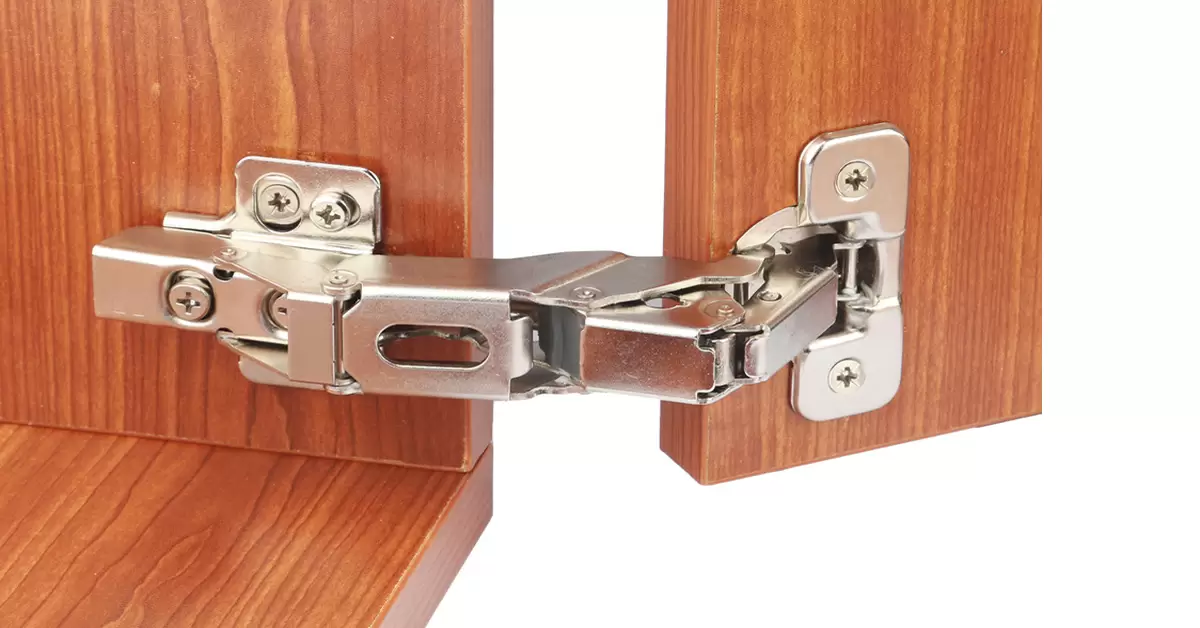
Overlay Hinges are designed for cabinets where the door overlaps the cabinetry frame partially or entirely. Overlay Hinges are suitable for kitchens where you like the cabinet door to leave only most or all of the cabinetry frame’s exposed edges for the wall lining or another cabinet.
Features:
- Available in both full-overlay and partial-overlay versions.
- The door completely overlays the cabinetry frame when closed.
- The door only overlays part of the cabinet frame. Part of the frame is exposed.
- It comes in two varieties; surface-mounting and inset.
- Used predominantly on modern cabinetry designs with clean lines.
Application:
- Those fitted cabinets with full overlay doors; cover the whole frame.
- For that minimalist look with no visible edges.
- For smooth, sleek, modern kitchens carrying contemporary cabinetry with a seamless finish.
6. T-Hinges
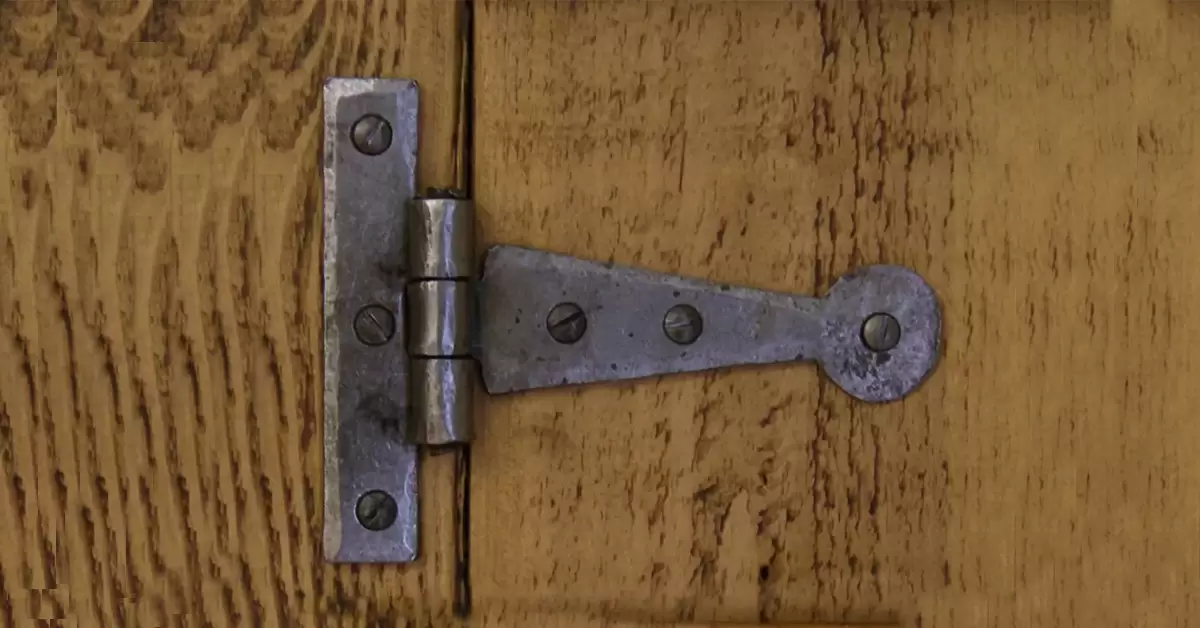
T-hinges have a typical “T” shape and are often used on freestanding cupboards or for barn doors and other doors that need to look old country. T-hinges are just what you would use for the kitchen with a country or farmhouse style.
Features:
- The T-shape hinge is full view, providing an ageing classic rustic appeal.
- Available in steel and brass.
- Durable enough for heavy doors.
- A simple install with a surface-mounted application
Application:
- Rustic farmhouse-style kitchens.
- Pantry doors or freestanding cabinets.
- Homeowners who like decorative hardware are left exposed.
7. Wrap Hinges
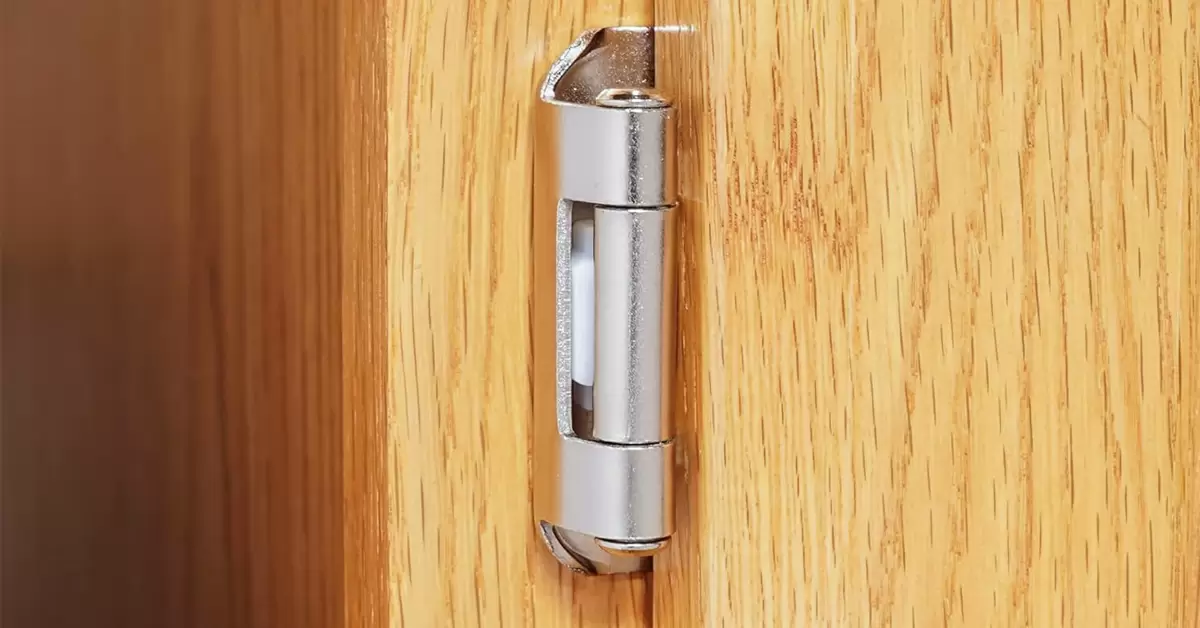
Wrap hinges offer a sleek and modern solution for cabinet doors, allowing them to wrap around the frame when closed, completely concealing the hinge. This creates a clean, unobtrusive look, ideal for contemporary cabinetry.
Features:
- Conceals the hinge mechanism when the door is closed.
- Provides a seamless, clean aesthetic.
- Available in various finishes to match cabinet styles.
- Full-wrap and partial-wrap options for different designs.
Application:
- Ideal for overlay and inset doors.
- Perfect for contemporary kitchens, bathrooms, and modern furniture.
- Best for projects where aesthetics and a clean, unobtrusive appearance are a priority.
8. Magnetic Hinges
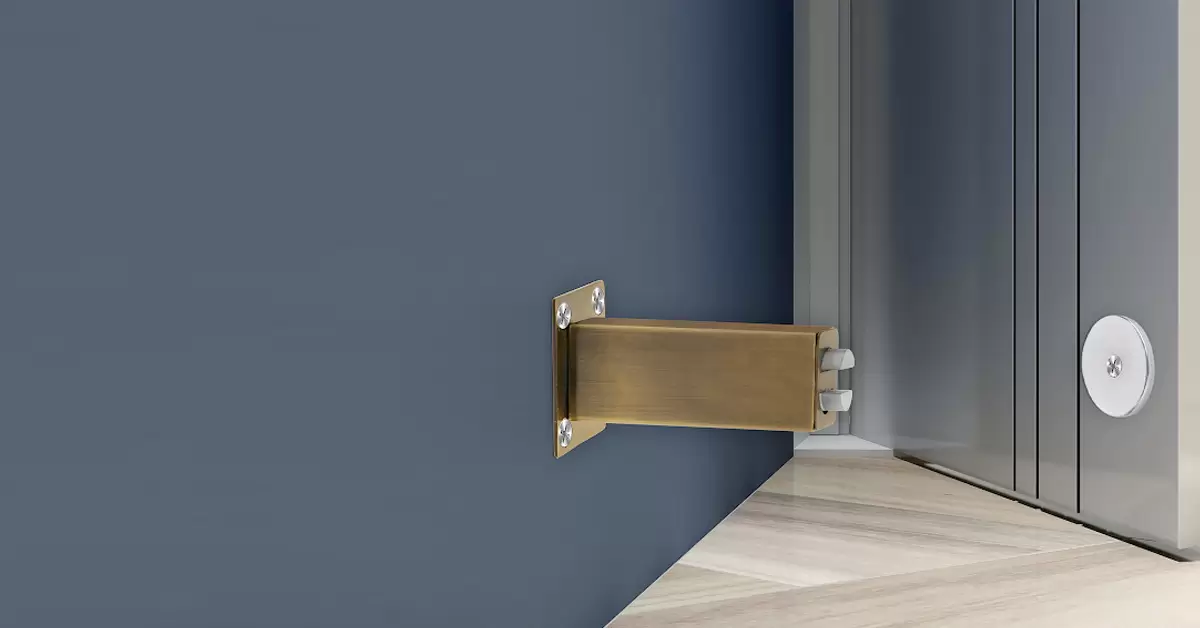
The magnetic hinges use magnets instead of the traditional mechanical hinges holding the cabinet door closed. These are usually used when you are looking to achieve a sleek, futuristic look without hardware.
Features:
- Magnets are used to hold the door in place securely.
- It has a feature of no visible hinges which makes it great for minimalist designs as well as ultra-modern kitchen designs.
- It is available in soft-close versions to provide for smoother operations.
- It requires to be very accurately fitted so that the magnets can be appropriately aligned.
Application:
- Super minimalist, modern kitchens with smooth outlines.
- Without heavy-duty support, cabinet doors.
- For innovative and low-maintenance homeowners.
9. Pivot Hinges
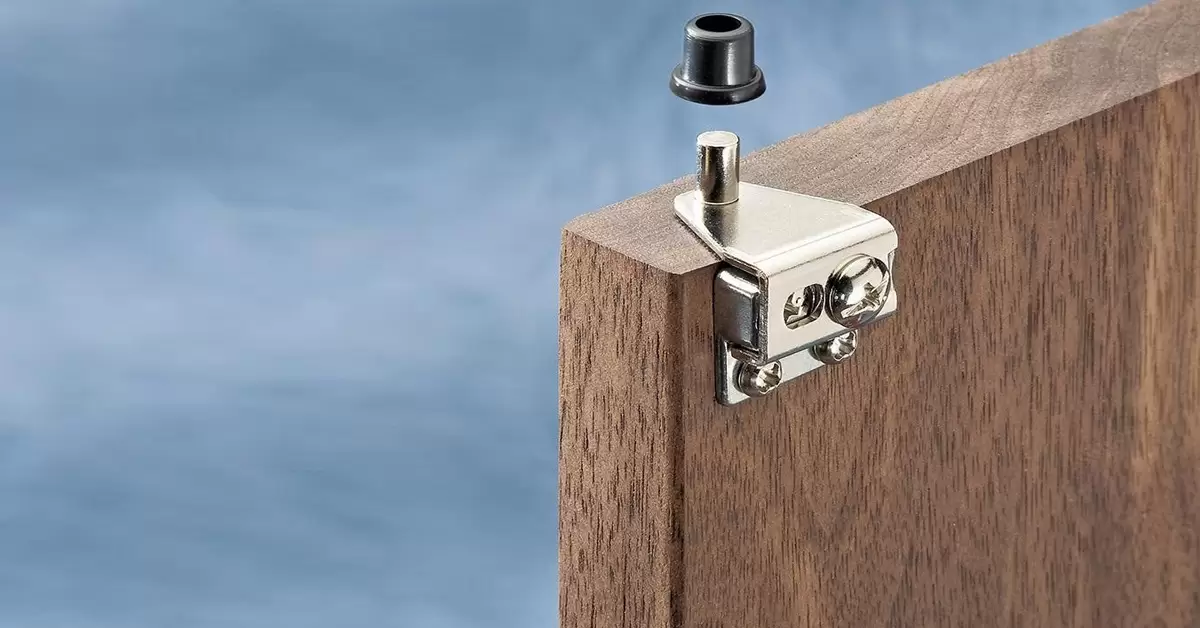
Pivot hinges allow a door to rotate on a fixed point close to the top and bottom. These types of hinges are commonly used with swinging doors in both ways.
Features:
- Because of the pivot hinges, this door is capable of swinging in both ways. These make excellent pivot hinges to use for common doors.
- A hidden hinge system which placed inside the door for a slim, clean appearance.
- The pivot hinges can be adjusted so that the door will remain plumb and properly aligned.
Application:
- Double doors or big doors in high traffic.
- Kitchens where a door may have to open both ways.
- Homeowners who want a smooth operating and clean-looking hinge system.
10. Surface-Mounted Hinges
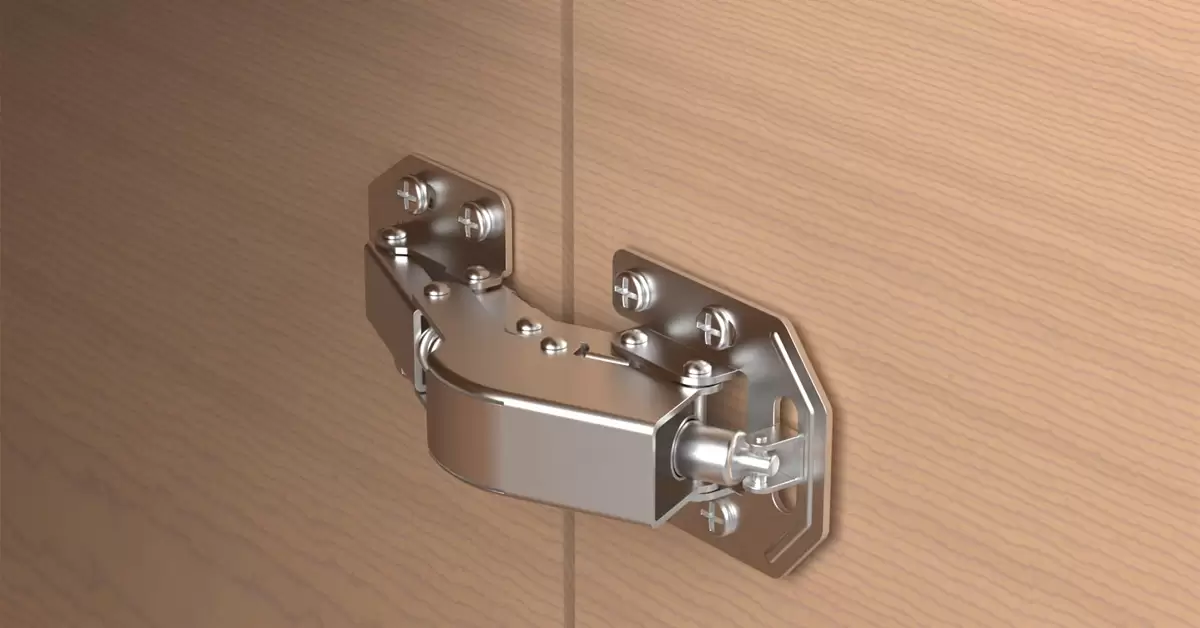
Surface-mounted hinges are the least complex type of hinge, installed on the exterior of both the door and the cabinet frame. These are mainly applied to simple, not-so-expensive cabinetry solutions.
Features:
- The hinge is visible on the outer side of the door and frame which gives an exterior look.
- Relatively easy to apply compared with the rest of the complicated hinge types.
- Comes in a variety of finishes and materials, such as brass, chrome, and steel.
Application:
- Budget-friendly kitchen remodeling or DIY project.
- Traditional kitchens where hinges are an element of the design.
- Cabinets that you want to function – period – no longer.
Choosing The Right Hinge For Your Kitchen Cabinets
Choosing the right hinge for your cabinetry is a decision that involves many considerations such as style of cabinetry, the weight of doors, and aesthetics. Here is a quick guideline that can guide you through choosing the right one:
- For A Modern Minimalist Kitchen: Concealed hinges will give your modern kitchen that clean, smooth look. They go well with the full-overlay cabinet door.
- Classy Or Old-Time Taste: Use butt hinges or semi-concealed hinges for that visible, antique look.
- For Strength And Durability: You may opt for piano hinges or butt hinges when dealing with heavy doors or need a hinge that would be supporting a large surface area.
- For Wider, Multi-Door Cabinets: Piano hinges will give full support when working with oversized doors or multi-panel cabinets.
Installation And Maintenance Tips
Installing and maintaining your chosen kitchen cupboard hinges is very important to ensure it will work perfectly for years. Here are a few tips for each:
Installation Tips:
- Measure Twice, Cut Once: Measure the proper location of where it’s going to be hinge placement before installation.
- Pilot Holes Drilling: With hidden hinges and other specialities kinds of hinges, ensure pilot holes are made to avoid damage to the wood.
- Use the Correct Screw Size: The same hinge size and the fitted screw size must be used to avoid cracking the joining surface.
Maintenance Tips:
- Lubricate Hinges: Grease a small amount of oil or lubricant on hinges, particularly piano hinges, and butt hinges, to not raise rust and ensure easy gliding action.
- Periodically Tighten Screws: after time, the screws may loosen, particularly with half-hidden hinges or completely hidden hinges that would pull the door awry.
- Check For Wear: Regularly inspect your hinges for signs of wearing out or damaged parts, especially those exposed, like butt hinges.
Conclusion
There is a wide array of functionality and aesthetics that hinges in kitchen cabinets provide. Concealed hinges can be a sleek and hidden affair, butt hinges a classy look or even the minimalist style of magnetic hinges – each style with its merits and applications.
By getting to know the characteristics, best use, and benefits of each type of cabinet hinges, you will find that you make a fitting choice for the kitchen design. Factors such as door weight, style, and desired functionality can be considered, and the cabinetry will be beautiful and functional for many years.
Read Also: Glimpse through the Various Types of Hinges for Cabinets

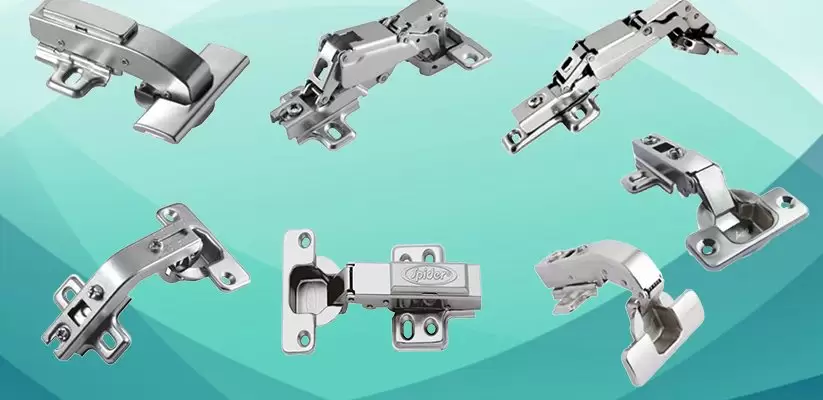


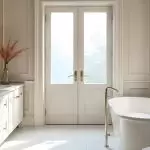
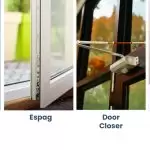

















Post A Comment